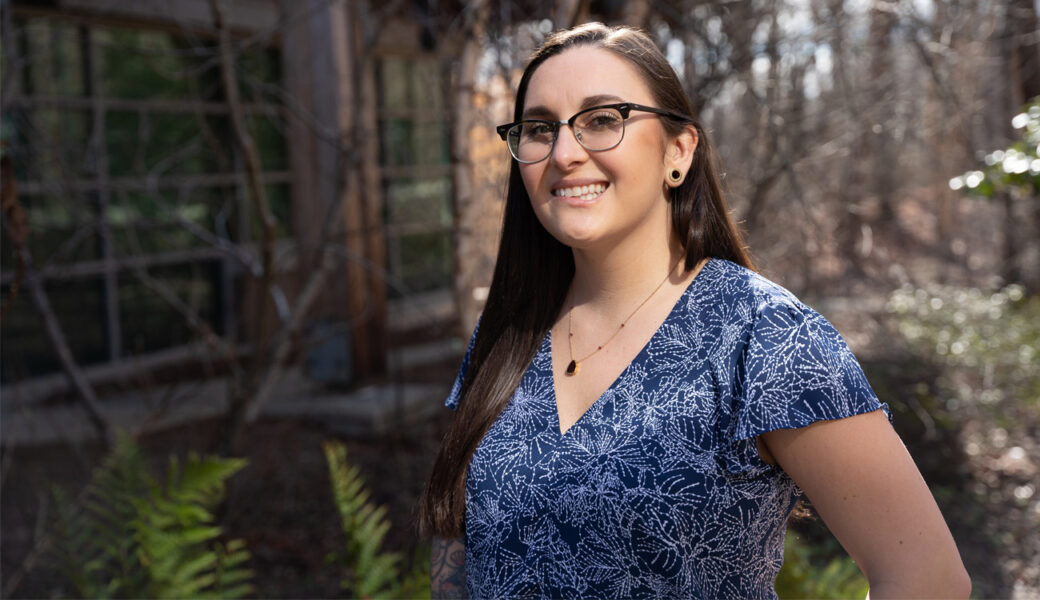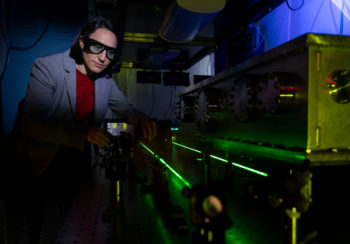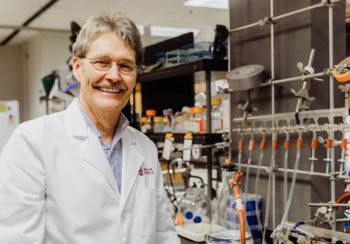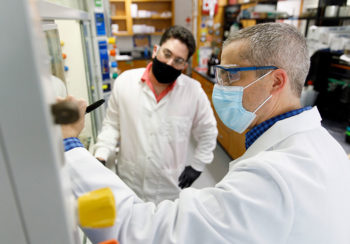Five years ago, Brianna Garcia was getting up at 3 a.m. to report to her job as a corrections officer at a women’s county jail in California. Today she’s several thousand miles away and getting up later while writing her dissertation in chemistry.
The distance between the two experiences is not as wide as one might think, according to Garcia, who will graduate with a Ph.D. in May.
“I don’t think anyone who has known my past would ever think that this is what I would be doing, but it’s been fantastic,” she said. “You don’t have to fit a mold or be a certain type of person to be a scientist.”
Corrections and chemistry
From an early age, Garcia was interested in law enforcement. Growing up in La Verne, California, her uncle was deputy chief for the nearby Pasadena police department, and she had family members in the military. She also shared her mother’s love of true crime, which led to a fascination with forensics. During high school she joined the L.A. County Sheriff’s Explorers program, volunteering on weekends at the local sheriff’s station.
At the same time, Garcia was excelling in school, graduating at 16 and enrolling at a junior college. She wanted to pursue an undergraduate degree in chemistry—preparing for a potential career in forensics—but didn’t qualify for financial aid. So she turned to law enforcement, becoming a corrections officer at Century Regional Detention Facility in Lynwood, a women’s facility in the L.A. County system.
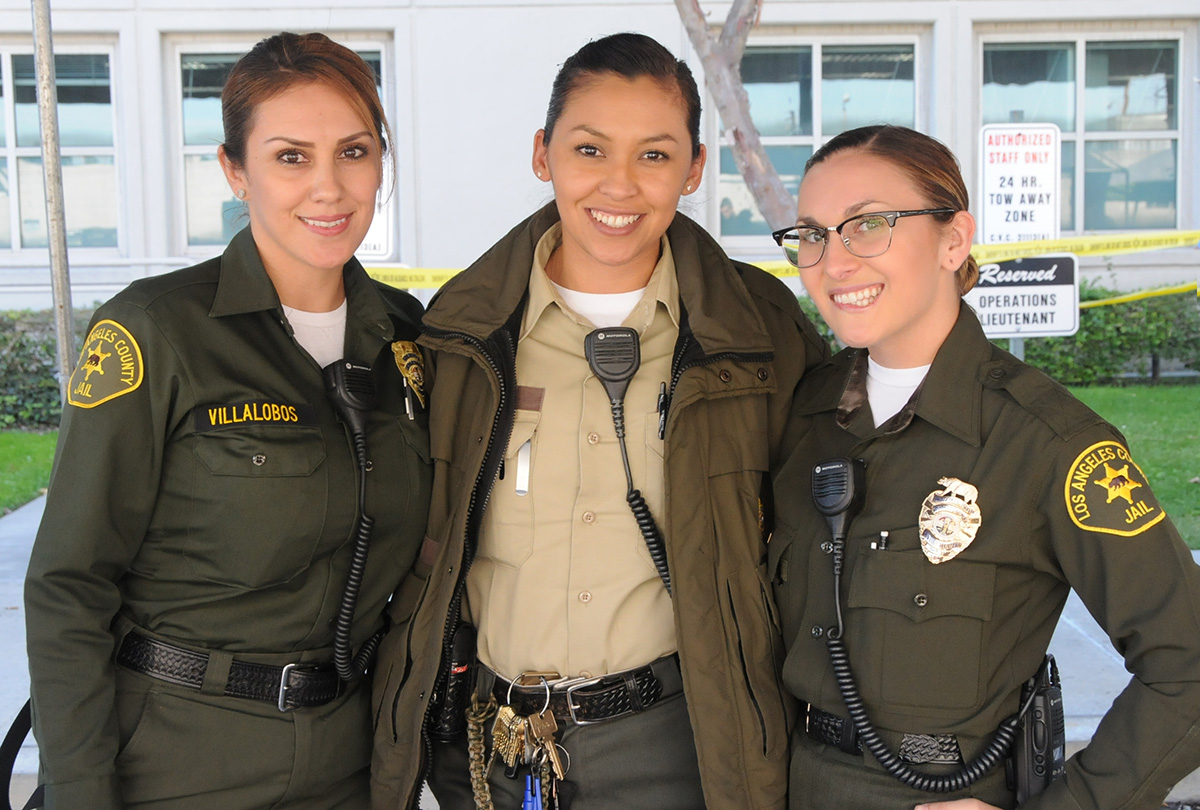
Every Friday through Monday, Garcia worked full time to coordinate beds for inmates as some left and others arrived. She worked with medical, mental health and operations staff, making sure that inmates were housed safely based on their medical and mental health needs, behavioral issues, criminal charges and gang affiliations. She also got to know the inmates.
“I spent a lot of one-on-one time talking to inmates, and it was very fulfilling. I got to learn a lot about human beings—different cultures, different upbringings—and get a whole different perspective on people who a lot of individuals don’t get to talk to,” she said. “But at the same time, it was emotionally exhausting.”
When she wasn’t working, Garcia was studying chemistry at California State Polytechnic Institute, Pomona, where her physical chemistry professor, Timothy Corcoran, recognized her aptitude for research. Working 50-70 hours at the jail didn’t leave time to pursue research projects, but Corcoran made her an offer—conduct research in his lab on her days off or whenever she could find time.
“That’s when I really fell in love with research. It was just a very different type of learning. I feel like undergrad is very much, ‘read a lesson, try and memorize or understand it, and then regurgitate the information,’” she said. “With research, he told me, ‘This is the problem. This is what we want to solve—go to work.’ It was very stimulating. I’d never had to use my brain in that way, and I really liked it. I liked being able to ask questions and dig into something and try and figure it out.”
First gen
After finishing her undergraduate degree in 2017, Garcia—the first in her family to earn a college degree—moved to Athens and began working on a Ph.D. in analytical chemistry at UGA. She studies metabolites, which are small molecules found within the cells, fluids and tissues of organisms, and her work requires techniques like mass spectrometry. This analytical method is used to identify known and unknown compounds by determining their molecular weight, to quantify known compounds, and to determine the structure and chemical properties of molecules that can then be related back to the observable physical properties of an organism.
“There are different chemical signatures in our body that help us know whether we’re sick or potentially have a disease. For example, we know that people with diabetes may have elevated glucose or insulin level differences, and we can provide diagnosis and/or treatment based on that,” Garcia said. “But there are a lot of diseases—cancer, for example—where we can’t routinely do that yet. My research focuses on creating methods to better identify what those chemical signatures of disease might be.”
With mass spectrometry, researchers like Garcia are able to measure thousands of potential compounds. The problem, she said, is being able to take the thousands down to just one. It’s one of the major bottlenecks in her field.
“We may know something is elevated, but we’ve got to identify what it is,” she said. “We’ve been able to do some systematic looks at the problem and find some tentative solutions to make it easier moving forward, but it’s still a big problem that needs to get solved.”
Garcia developed her mass spectrometry skills while working with Jon Amster, Distinguished Research Professor in chemistry, who remembers reading her application to UGA’s graduate program.
“I was stunned that she had a full-time job as a corrections officer and got a chemistry degree, which is a rigorous degree. It requires a lot of work,” said Amster, a faculty member in the Franklin College of Arts and Sciences. “My immediate impression was that this was a very well-organized individual who could pull off a straight-A undergraduate degree in chemistry and still have a full-time job.”
Garcia applies her mass spectrometry skills in her work with Art Edison, Georgia Research Alliance Eminent Scholar and professor in the departments of genetics and biochemistry and molecular biology.
“As a rule, I really value nontraditional paths,” said Edison, also faculty in the Franklin College. “I had a nontraditional path myself, so I’m always intrigued when I hear someone was a prison guard or a concert pianist or something you don’t see every day. I see it as someone who is skilled at many things, interested in many things, and probably has a lot of self-reliance, grit and toughness.”
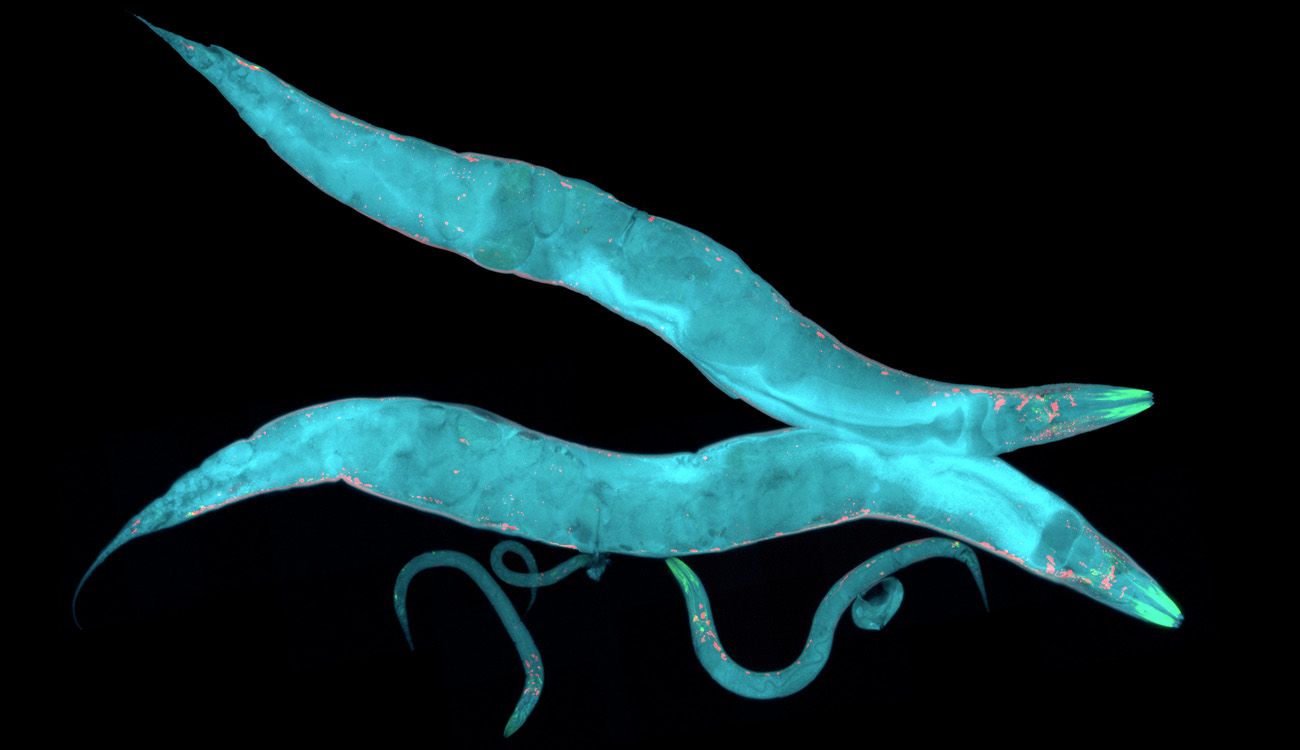
Team Worm
Edison is principal investigator (and Amster is a co-PI) for a multi-institution, multi-investigator consortium focused on finding better ways to identify metabolic compounds. Funded by a National Institutes of Health Common Fund grant, the project is centered on Caenorhabditis elegans, a roundworm often used as a model organism.
“Everything we do in my lab tends to get complex and involves a lot of collaborations and moving parts, and Brie plays a central role,” Edison said. “She works really closely with an NMR expert and a genetics expert, as well as others, and the three of them form what they call ‘Team Worm.’”
The C. elegans consortium involves researchers at Georgia Tech, Florida, Cornell, Michigan and Northwestern, and Garcia’s strong organizational skills allow her to interface with people at many universities and keep up with their parts of the project. The people skills she developed during her time as a corrections officer also help her collaborate productively.
“Research groups generally have lots of different personalities. Some are easier to get along with than others,” Amster said. “She is a very strong and stabilizing force when other people are kind of spinning out of control. She is good at giving people perspective.”
“Everyone has their own way of speaking and interacting,” Garcia said. “Working in corrections helped me learn to communicate with people without upsetting them or causing a reaction I didn’t intend. Sometimes I had to speak with an inmate who was at a level 10 in terms of their frustration and anger, and I had to learn very quickly how to talk to them and help them understand me better so that I could help them.”
Making waves
Edison’s team has been working with marine scientist Mary Ann Moran’s lab for several years, and Garcia has heard a lot of presentations about the metabolomics of carbon cycling through the ocean. Six months ago, she told Edison that she wanted to apply her analytical chemistry skills to marine science. After she earns her Ph.D., Garcia will take a postdoctoral position at Woods Hole Oceanographic Institution.
“I’m really happy about that,” Edison said. “Brie is expanding her horizons. Not a lot of people would want to leave their comfort zone and go learn a completely new system, and I applaud her for that.”
At Woods Hole, Garcia will look at ocean samples to examine the microbial interactions with metabolites. She’s also interested in working on coral disease metabolomics.
“Growing up in California, I’ve always been interested in and in love with the ocean,” she said. “One of the hardest parts of living in Athens is being away from the ocean. I’m really excited that I can apply my skills to understanding climate change and metabolic changes occurring in the ocean, because they’re so important to the future of our planet.”



